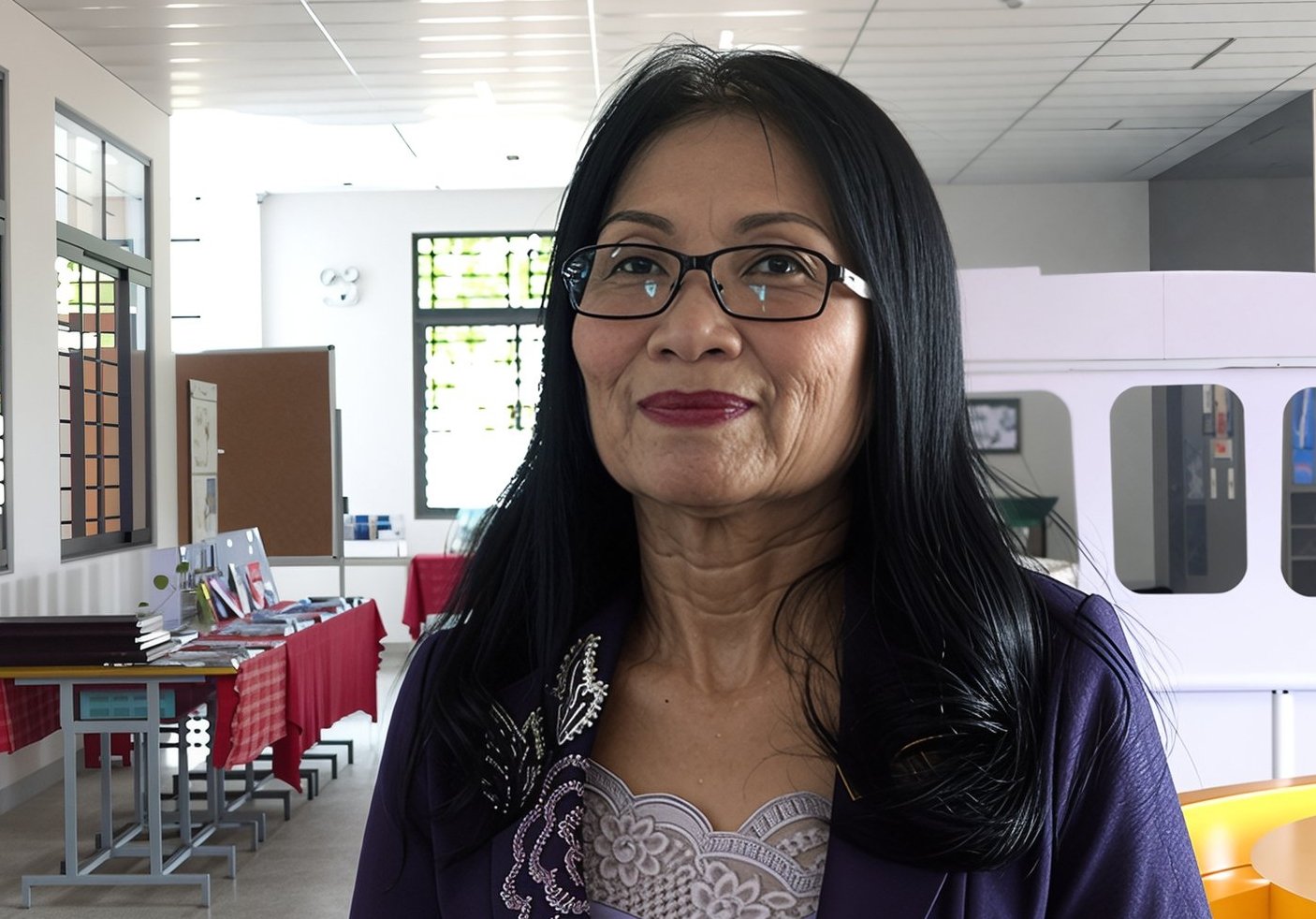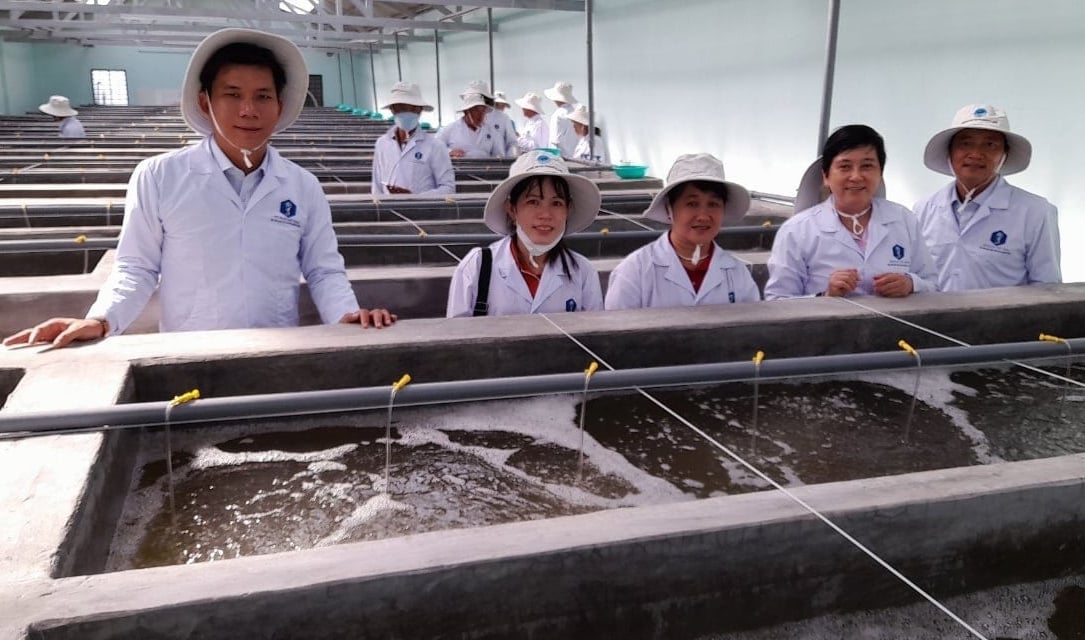December 4, 2025 | 12:27 GMT +7
December 4, 2025 | 12:27 GMT +7
Hotline: 0913.378.918
December 4, 2025 | 12:27 GMT +7
Hotline: 0913.378.918
The Mekong Delta is a key shrimp farming area in Vietnam. However, every year this area still suffers significant damage due to the impact of extreme weather phenomena and climate change, such as prolonged heat, heavy rain, or saltwater intrusion. The total damage is estimated to be equivalent to 2-3% of the total area of the whole region, which is an alarming figure.
Faced with this situation, VAN News interviewed Dr. Pham Thi Thu Hong, Head of the Faculty of Aquaculture, Mekong University, to learn about solutions to help the shrimp industry create an effective response and stable development in the context of increasingly severe impacts from climate change.

Dr. Pham Thi Thu Hong, Head of the Faculty of Aquaculture, Mekong University, shares her view on the solutions to develop the shrimp industry effectively and sustainably in response to climate change. Photo: Ho Thao.
How is climate change specifically affecting shrimp farming today, dear Dr. Pham Thi Thu Hong?
The aquaculture industry, particularly shrimp farming, is the sector most sensitive to climate change. Three clear affecting factors currently exist: fluctuations in temperature between day and night, erratic changes in rainfall and salinity, and low dissolved oxygen levels in water.
Temperature differences cause the shrimps to experience stress, reduced appetite, and reduced immunity. Prolonged rain reduces salinity and water temperature, creating conditions for pathogens to develop.
When oxygen in the pond is low, shrimp can die en masse. The process of decomposing organic matter in the pond produces toxic gases such as NH₃ (ammonia) and H₂S (hydrogen sulfide), which directly affect the health of shrimp as they live close to the bottom. Without timely adaptation solutions, the shrimp farming industry will be in a very vulnerable position.
What is the technological direction to help farmers adapt effectively to these fluctuations, madam?
First of all, raising shrimp in polyhouses and close areas is a good model to consider. It helps farmers completely control the farming environment from temperature and salinity to rainfall and wind. Thanks to that proactiveness, farmers not only avoid risks but can also increase the number of crops and the farming density to 300 - 400 shrimp/m³, instead of only 100 - 150 shrimp/m³ like the traditional model.
When combined with Biofloc technology or a water recirculation system, the effectiveness is taken to a new level. Biofloc helps maintain beneficial microorganisms in the pond, reduces water exchange, stabilizes water quality and limits pathogens.
The application of IoT sensors allows monitoring of hydro-physical-chemical indicators such as pH, oxygen, and salinity in real time. Farmers will proactively respond, instead of "running after the incidents". This is a very important step towards smart, safe, and economical shrimp farming.
What about small-scale households that do not have the conditions to invest in high technology?
For those who cannot invest in polyhouses, we encourage the rotation of whiteleg shrimp with tilapia. This is a simple but highly effective ecological solution. Tilapia not only adapts well to fresh and brackish water but also possesses biofiltration ability, helping to keep the pond environment clean.
When farming in rotation, farmers can interrupt the life cycle of pathogens, helping the next crop of shrimp to be healthier. This model is suitable for the natural, technical and economic conditions of most farmers in the West. In addition to the shrimp - tilapia model, depending on the terrain, farmers can apply shrimp - crab - fish and shrimp - rice models, which are also very effective.

Raising shrimp in polyhouses helps limit disease risks and is now considered a safe and effective method. Photo: Ho Thao.
Do you have any suggestions regarding breeds and the role of policy?
When it comes to breeds, the prerequisite is that the breeds are disease-free, have clear origins, and are resistant to disease. Prevention is always cheaper and more effective than cure.
As for policy, the State needs to focus on investing in infrastructure for farming areas, such as water supply and drainage systems and providing preferential credit support so that people can boldly apply new technologies. Training institutions and universities should also integrate the content of “climate change adaptation in aquaculture” into their programs, while expanding training in technology use skills for people.
Only with coordination between farmers - scientists - businesses - managers will the Vietnamese shrimp industry be able to respond to climate change and develop stably and sustainably in the long term.
Thank you, madam!
Translated by Samuel Pham

(VAN) After three years, Project FST/2020/123 collected approximately 3,000 insect specimens, classified them into about 50 morphological groups, and identified around 40 species, including several new species.
/2025/12/01/0509-2-175427_206.jpg)
(VAN) Emission-reducing coffee areas in Lam Dong have entered the new crop with stable yields, improved quality, and a remarkably enhanced cultivation environment.

(VAN) The Institute of Agricultural Sciences for Southern Vietnam (IAS) marked its 100th anniversary in Ho Chi Minh City, celebrating a century of growth as a leading institute contributing significantly to Viet Nam’s agricultural development.

(VAN) An increasing number of livestock farms are using biogas generators to create a source of renewable electricity, helping to save costs and mitigate environmental pollution.

(VAN) Small changes in rice cultivation, from irrigation methods and straw collection to input management, are paving a new way for Vietnam's agriculture in the journey toward emission reduction.

(VAN) With the project of converting biogas into renewable electricity, Australia is both helping pig farms reduce their energy costs by up to 25% and contributing to environmental protection.
![Hue aims for Net Zero: [1] Initial steps from green transportation](https://t.ex-cdn.com/nongnghiepmoitruong.vn/608w/files/huytd/2025/11/28/0853-anh-6-giao-thong-xanh-hue-094717_940-153724.jpg)
(VAN) For sustainable development, Hue City is implementing many solutions to promote green transportation, which is an important initial step on the journey to building a Net Zero Hue.